Lawns can be attacked by all kinds of invaders, including insects, fungi and weeds. Some of those weeds can even resemble grass, but they are still unwelcome arrivals since they can damage areas of your lawn or even kill it.
At first, grass-like weeds might not be easy to spot, and you may mistake them for part of your lawn – so to help, here are 13 weeds that look like grass to help you identify and deal with them quickly and efficiently. Each of these grasses requires a certain weed management approach or a combination of several ones.
If you want to learn about all the weeds that can grow in your lawn – including some we talk about below – you can check out this video before reading on.
List of Weeds that Look Like Grass
1. Crabgrass (Digitaria sanguinalis and Digitaria ischaemum)
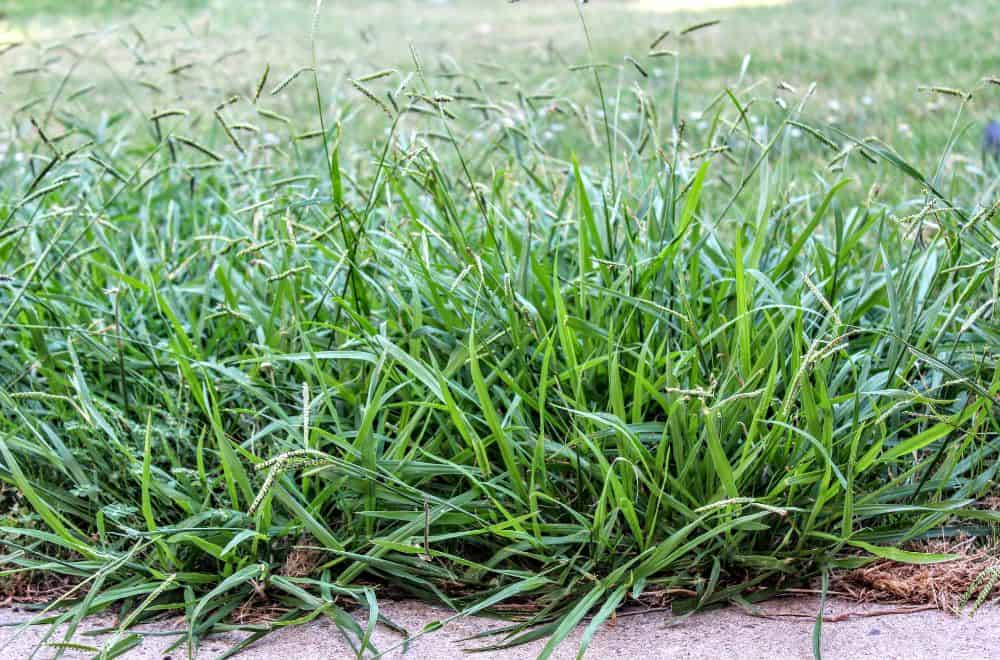
One of the most common lawn invaders you may come across is crabgrass. Crabgrasses are also known as fingergrasses and belong to genus Digitaria.
In the northern US, the most prevalent species is Digitaria sanguinalis, commonly known as large crabgrass. In the southern half, Digitaria ischaemum, also known as smooth crabgrass, is more frequently encountered.
Crabgrasses thrive in sparse lawns that are lightly watered, unfertilized and poorly drained. They are annual, so they die out each year at the start of winter, but each plant can produce up to 150,000 seeds a year, which germinate the following spring.
When it dies, crabgrass can leave unsightly areas of dead grass in your lawn, but it is easy to deal with. If you reseed your grass and ensure your lawn is watered, fertilized and in good health, crabgrass won’t be able to compete and so won’t return the following spring.
However, once it takes root, it can spread rapidly throughout your lawn if you don’t act. To combat it, pull it up by hand when it appears or simply keep cutting it to prevent it from seeding. Alternatively, you can also consider turning to herbicide for more serious infestations.
Identification: Crabgrass looks very similar to regular grass, although it grows in clumps and has a thicker, less attractive look. It can reach around 20 inches in height if left to grow.
To see the difference between crabgrass, quackgrass and tall fescue, give this video a quick watch.
2. Annual bluegrass (Poa annua)
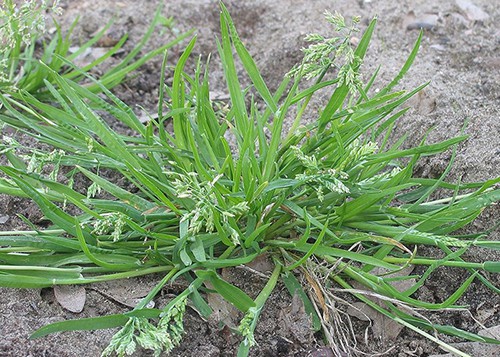
Image Credit: extension
Annual bluegrass is a common problem in North American lawns. This weed likes cool, moist climates, and it commonly grows in areas of lawns that are shaded by trees.
It is related to Kentucky bluegrass but has a lighter, brighter green shade. You can also identify it by the long ligule (membrane) holding the base of the leaf to the stem.
The best course of action is to ensure you don’t provide it with the conditions it enjoys, so avoid creating the shaded, moist environment in which it thrives. If you see some growing, you can treat it with herbicides; pre-emergent herbicides also exist to prevent its return.
Identification: Look for the light, bright green color and the long ligule that attaches the leaf to the stem.
3. Common couch (Elymus repens)
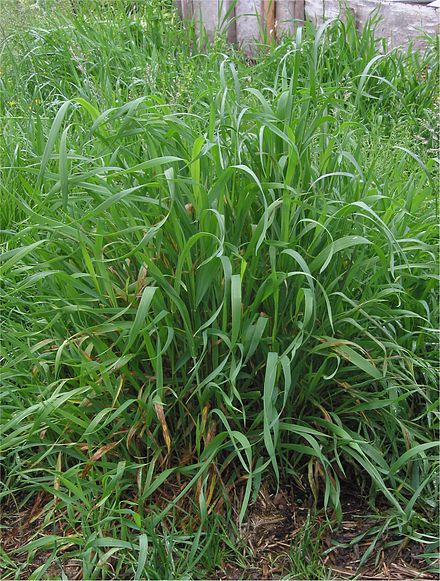
Image Credit: en.wikipedia
Common couch, Elymus repens, also goes by several other names, including couchgrass and quackgrass. A perennial weed that is equally at home in the sun or the shade, it is a hardy species that spreads via rhizomes, and it has a tough root system, making it difficult to remove.
It will probably arrive in your lawn as airborne seeds, and it likes to make its home in sparse, unhealthy lawns, so the best way of deterring it is ensuring your lawn is always in good health.
When you see it growing in your lawn, you can dig it up by hand – but you need to pull out every last piece, or anything left in the soil will regenerate, and you will quickly find yourself dealing with a new growth.
If left unchallenged, it will spread quickly throughout your lawn, so you should deal with it as soon as you notice its presence.
Identification: Look out for course patches of blue-green grass with finger-like leaves growing around the stems.
4. Nutsedge (Cyperus esculentus and Cyperus rotundus)
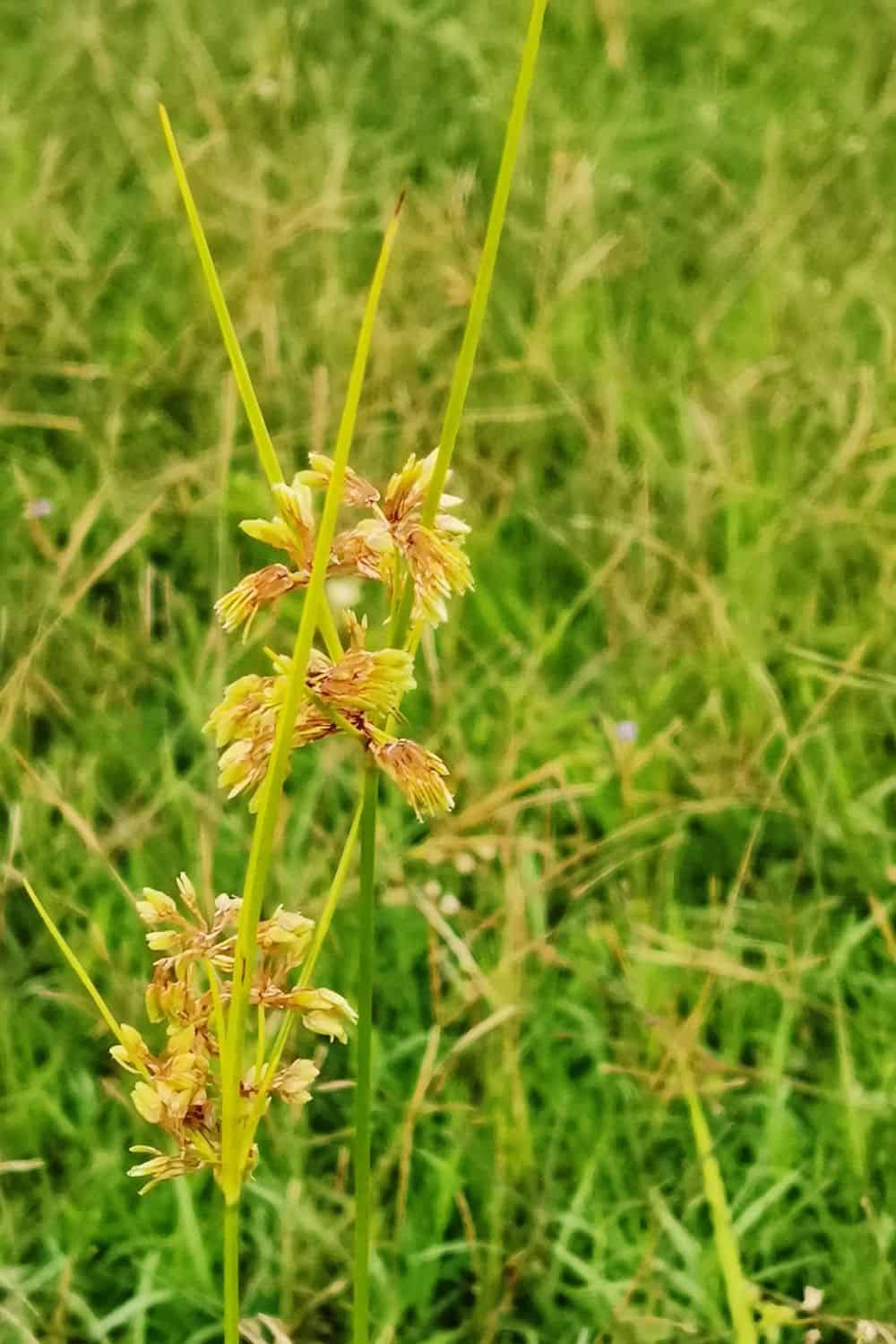
Yellow nutsedge (Cyperus esculentus) and purple nutsedge (Cyperus rotundus) are two weeds you really don’t want in your lawn. They can arrive either by air via seeds or below ground via rhizomes or tubers, and as a perennial weed, once it’s in, it’s extremely hard to get out.
The problem is, since it will regrow from any fragments you leave in the ground, pulling it up won’t help – and may even make the problem worse.
The best plan is to keep your lawn lush and healthy so nutsedge can’t move in in the first place. However, once it’s there, you’ll probably need to turn to herbicides to kill it and prevent it from returning.
Identification: Young nutsedge can look very similar to regular grass and has a light green color. However, it is easy to identify by the nut-like tubers on its roots that give it its name.
5. Yellow salsify (Tragopogon dubius)
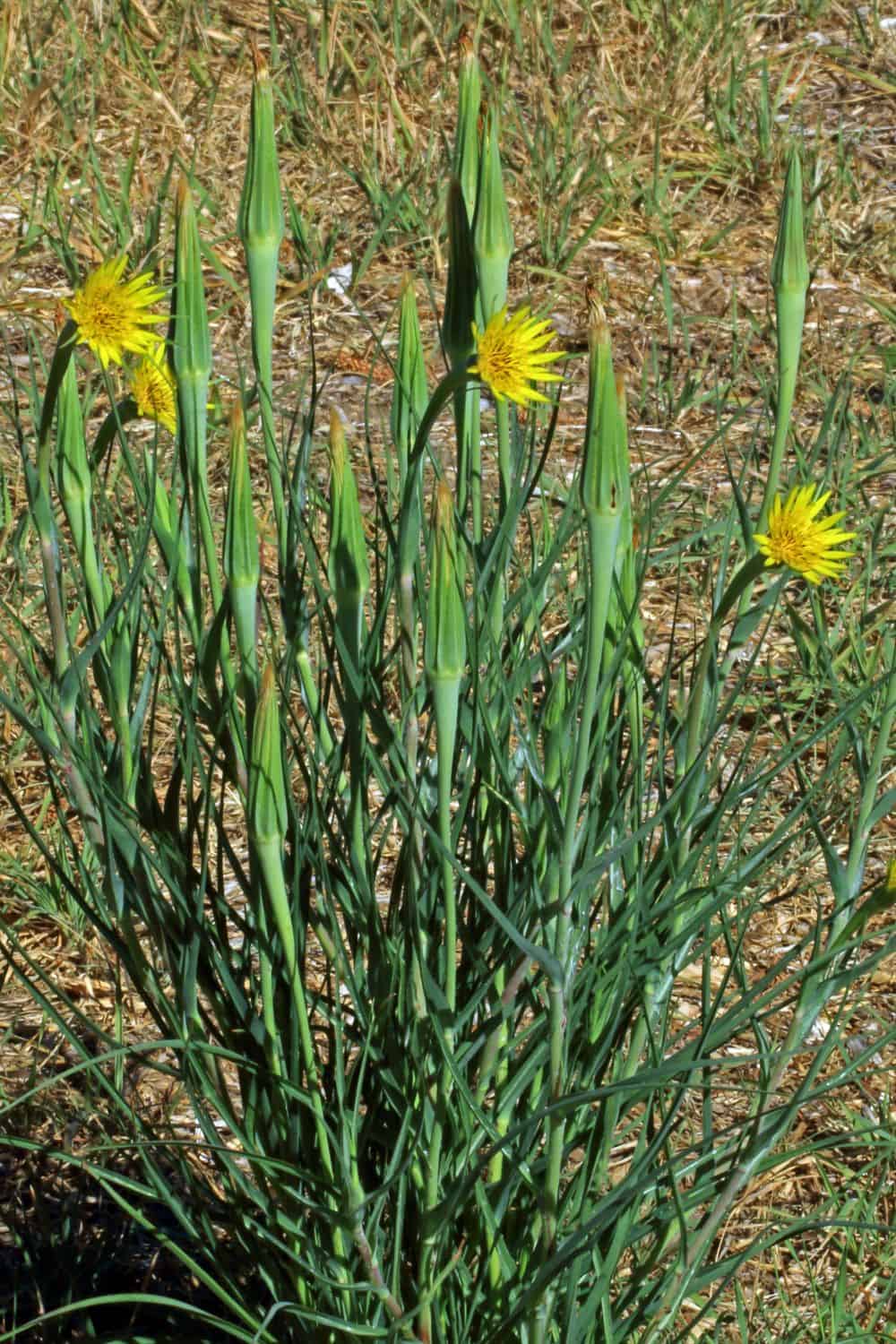
Native to southern and central Europe and western Asia, this weed is now also present in North America, where it is considered an invasive species.
Yellow salsify, also known as western salsify, enjoys sunny areas, and as it grows, it develops yellow flowers, which are followed by large puffballs.
If you mulch your garden and lawn and keep your lawn healthy, this weed won’t be able to establish itself. If it does, you can simply pull it out, and you can also cook and eat the roots, which are said to have a flavor reminiscent of oysters!
Identification: Before it flowers, look for course gray-green leaves. Later, when it develops its yellow flowers or white puffballs, it will become more obvious which species you are dealing with.
6. Green and yellow foxtails (Setaria viridis and Setaria pumila)
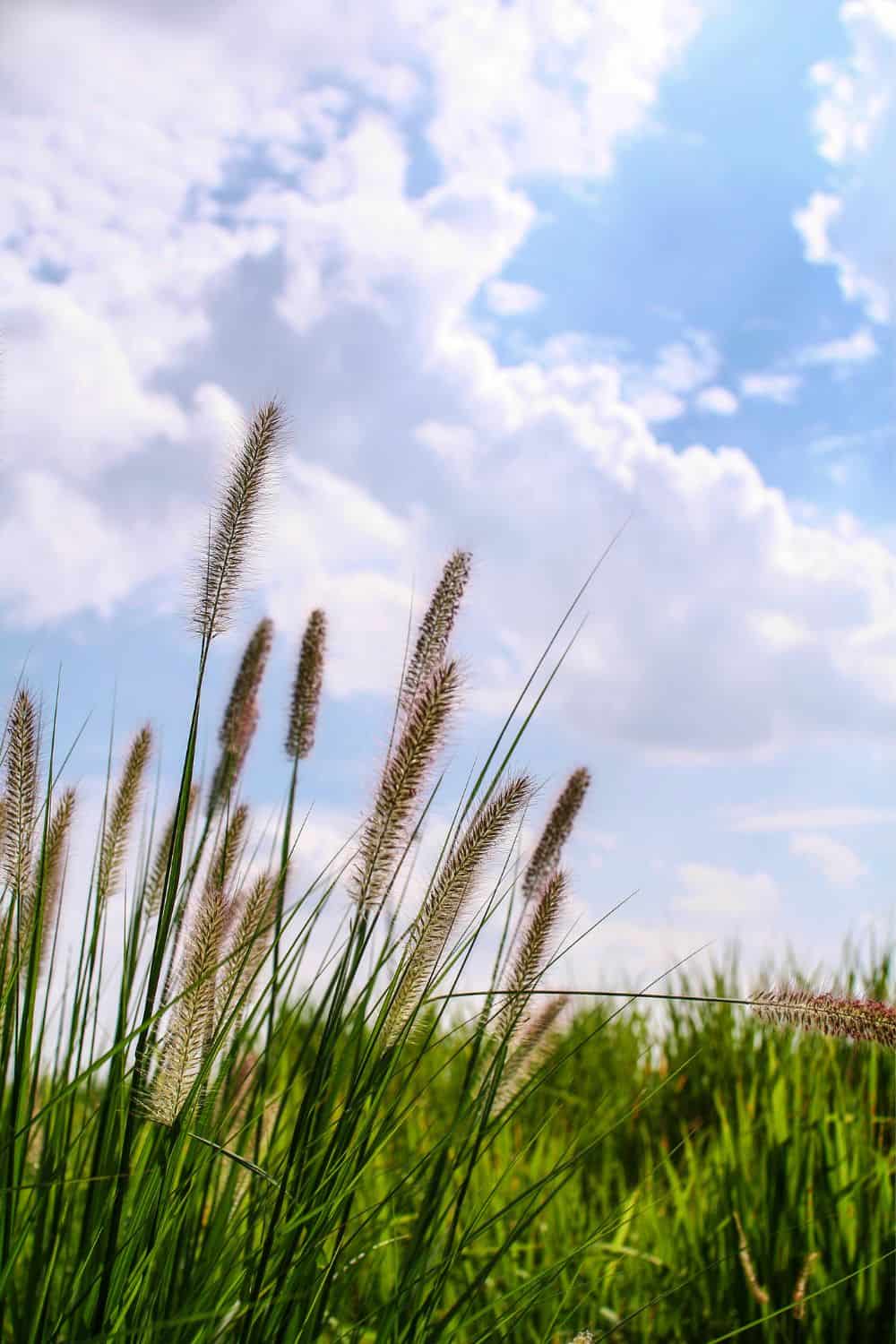
Named for their resemblance to foxtails, these grass-like weeds are another annoyance often faced by lawn owners. One problem is that those fluffy-looking foxtails contain hundreds of seeds ready to spread the species throughout your lawn and the rest of your garden.
As with many of the weeds that like to invade lawns, foxtails can be kept at bay simply by keeping your grass healthy. Where grass is thriving, it won’t be able to get a foothold, and this is the best solution.
If it does manage to take root, you can simply pull it out or even just leave it to die since it is an annual rather than perennial weed. Once it dies, take steps to improve the health of your lawn because if your grass is thick and lush, foxtails won’t be able to return the following year.
7. Johnsongrass (Sorghum halepense)
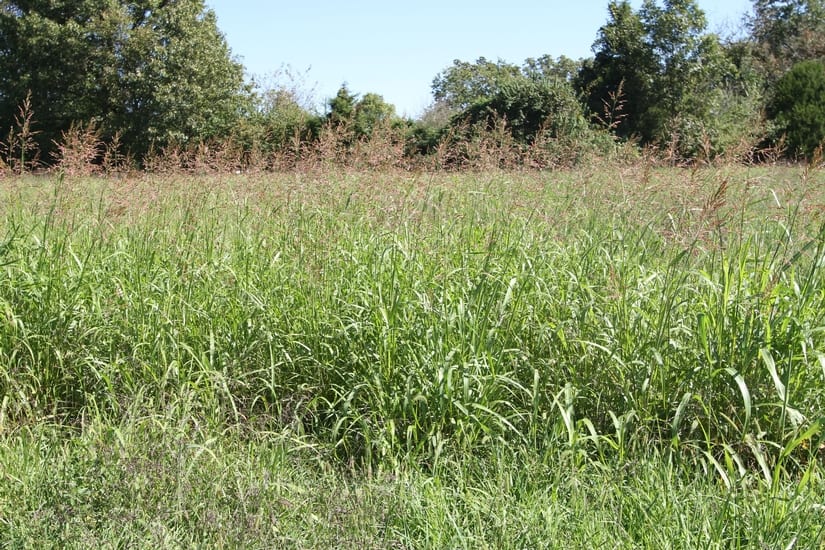
Image Credit: weedid
If left to its own devices, johnsongrass can reach heights of up to seven feet – although most homeowners are unlikely to allow this to happen in the middle of their lawn.
It is a perennial weed, but you can deal with it relatively easily just by digging it up or by dousing it in vinegar.
Another solution for larger patches is tilling the soil to expose the rhizomes to the cold of the winter, which will kill them – though of course, you will have to reseed the following year.
Identification: In its early stages, johnsongrass resembles corn seedlings. Later, you can identify it by leaves up to an inch in thickness with a white vein running down the center.
8. Creeping bentgrass (Agrostis stolonifera)
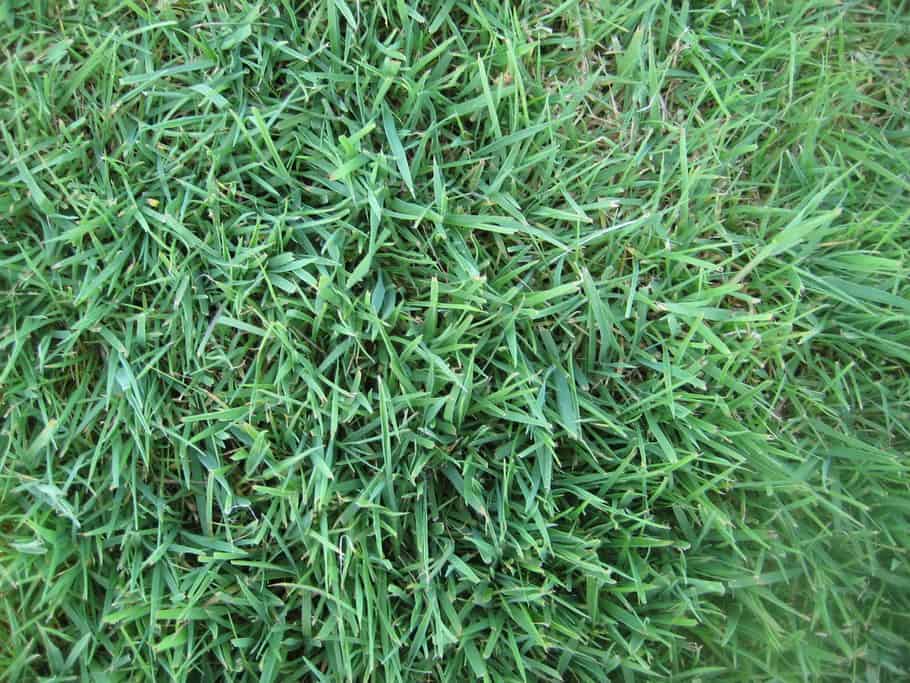
Image Credit: plantscience
This perennial grass species is sometimes planted deliberately and is a popular choice for putting greens and fairways on golf courses in the northern US.
However, it can also invade lawns, spreading through stolons and appearing as light patches in your grass. It doesn’t like too much heat and will turn brown when the temperature starts to rise.
If you are invaded by creeping bentgrass, the best option is to turn to a suitable herbicide to kill it off.
Identification: This is a species that can be spotted as light patches of fine grass in your lawn. If you let it grow taller than an inch, it will start to take on a puffy appearance.
9. Smooth bromegrass (Bromus ramosus ramosus)
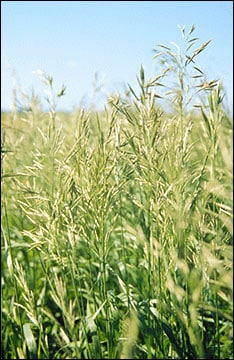
Image Credit: extension
Another tricky customer that is best avoided, smooth bromegrass can rapidly take over a lawn if you don’t do anything to stop it. This is because of its dense root system and its ability to spread via rhizomes – and once it’s established, you’ll have trouble getting rid of it.
However, it will struggle if mown short and crowded out by the grass of your lawn, so if you make sure the grass you want growing is healthy and thriving, it will defeat the bromegrass on its own. On the other hand, for more extensive growths, effective herbicides also exist.
Identification: If left to grow, this weed can reach between three and seven feet in height. It features long, drooping leaves that can be between eight and 20 inches in length and that are covered in fine hairs.
10. Carpetgrass (Axonopus compresus and Axonopus affinis)
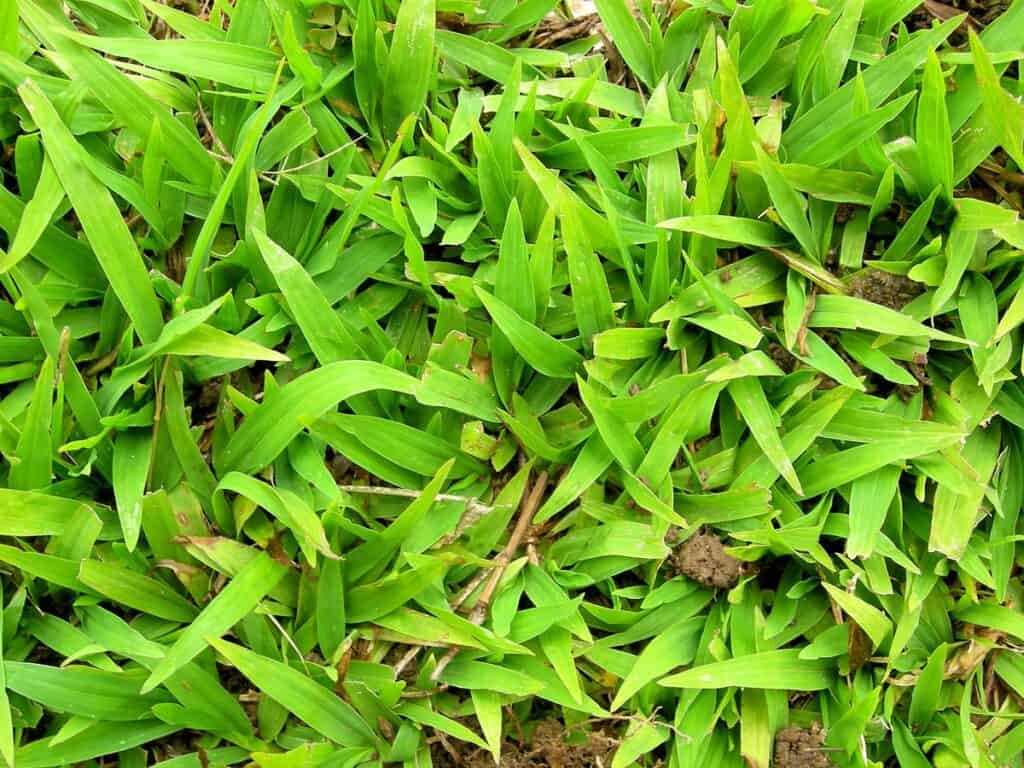
Image Credit: justinseed
These two related perennial species grow in thick mats and can reach up to 12 inches in height. They prefer moist, shaded areas with acidic soils – to kill them, you can use a quarter of a cup of salt mixed in a gallon of water or a treatment of lime to lower the acidity of the soil.
Identification: Look for thick mats of grass-like growth of a medium green color. In summer, look for tall seed heads that look similar to those produced by crabgrass.
11. Path rush (Juncus tenuis)
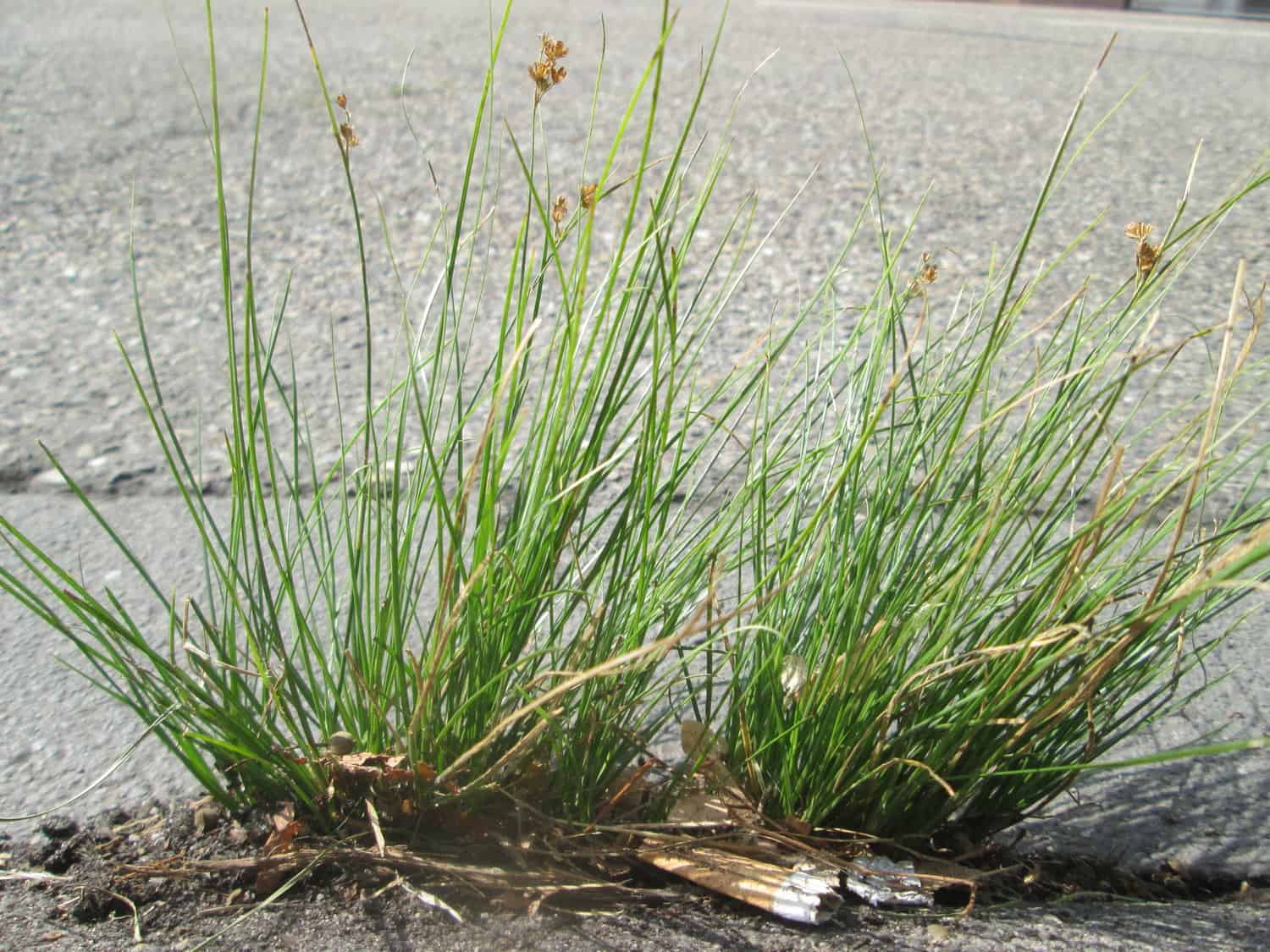
Image Credit: indefenseofplants
This weed can grow up to 24 inches and is also known as slender rush, field rush, slender yard rush and poverty rush. It spreads underground via rhizomes, making it a challenge to get under control once present.
Herbicides are not effective against this unwelcome arrival, so you’ll need to get on your hands and knees and pull it up manually. When you do this, try to pull up the whole root system in one go to stop it regenerating from pieces left underground.
Another option is to keep your lawn mown short, which will prevent it from sending out seeds – although as a perennial, it may keep growing back from the roots still in the ground.
Identification: In the early stages, look for clumps of grass-like weeds. The leaves all grow from the base while the stems are partly covered by sheaths and have distinctive cymes, clusters of branches holding seeds, on top.
12. Tall fescue (Festuca arundinacea)
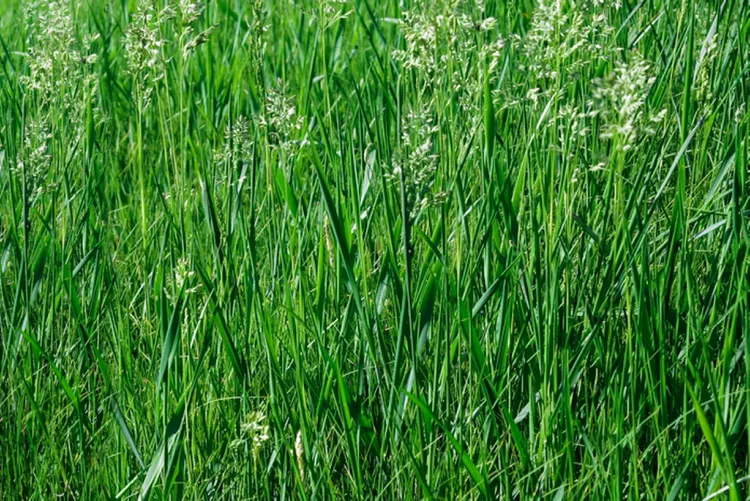
Image Credit: thespruce
This long-lived perennial is another species of grass that is commonly used for lawns – but that can also arrive uninvited to take over if not controlled properly. The properties of this grass that make it such a great option for lawns are also what make it a formidable weed.
It is a hardy species that spreads via rhizomes and is resistant to drought, making it difficult to vanquish once present. Your best option is smothering it, covering it with tarp, cardboard, newspaper or something similar and letting it die through lack of sunlight.
Identification: This grass is characterized by thick, wide leaves featuring pronounced veins the whole length of the leaf. The edges of the blades feel rough to the touch, and the bottom of the leaf is a lighter color than the top.
13. Goosegrass (Eleusine indica)
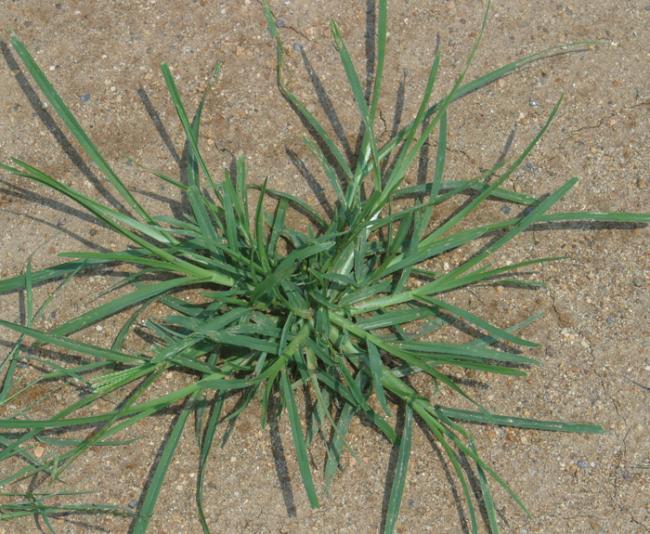
Image Credit: crops.extension.iastate
This small but invasive grass prefers warmer climates and is named for the shape of the strands that spread out in the shape of a goose’s foot.
It is capable of moving into disturbed areas of lawns, especially where the soil is compacted and in full sunlight. This means the best preventative action is ensuring your lawn is well aerated and drains well. It can survive being mown closely and will still produce seeds.
The use of herbicides is an option for removing it from lawns, but some strains have become resistant to herbicides.
Identification: Goosegrass is easy to identify by the distinctive strands at the top, which can number from two to ten.
To see how to tell the difference between goosegrass and crabgrass, check out this video.
Prevention is better than cure
As you have probably noticed, most of these grass-like weeds become established when they find lawns that are in poor health. This allows them to move in and spread, and once they are there, they can often be tough to remove.
For this reason, you can stop them in their tracks by ensuring your lawn is always in good health and well cared for. However, if these grassy weeds do make your lawn their home, you need to identify them quickly and remove them to prevent them from propagating further.
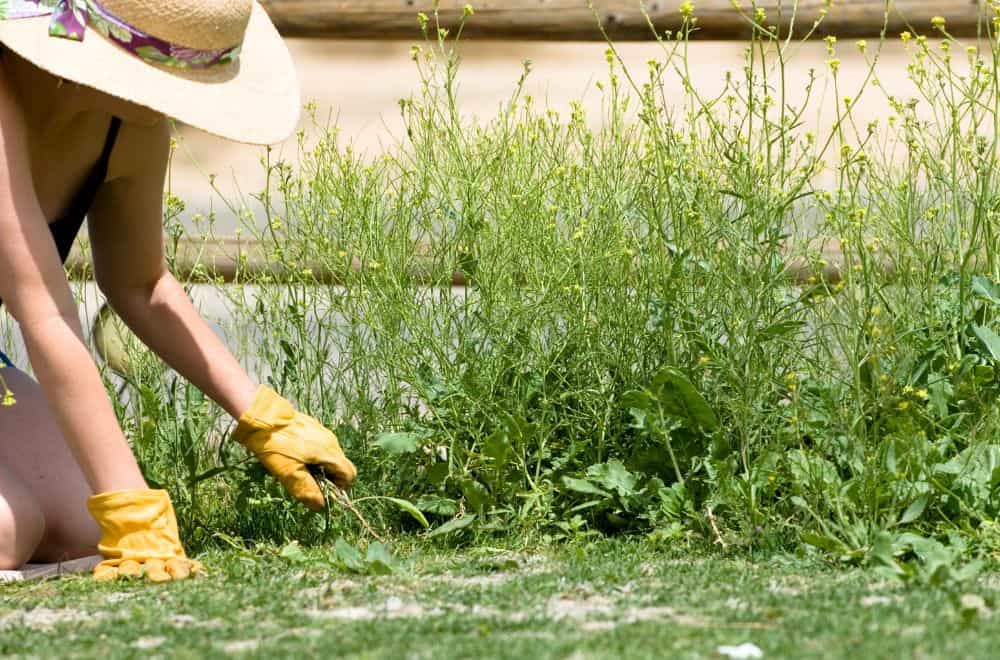
Leave a comment